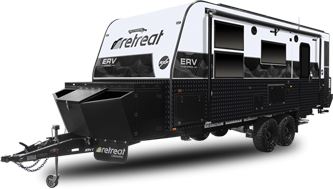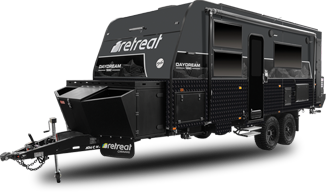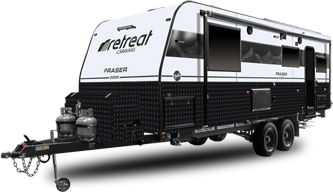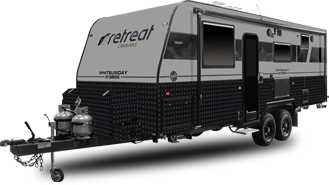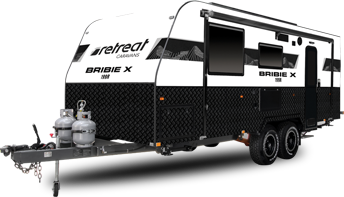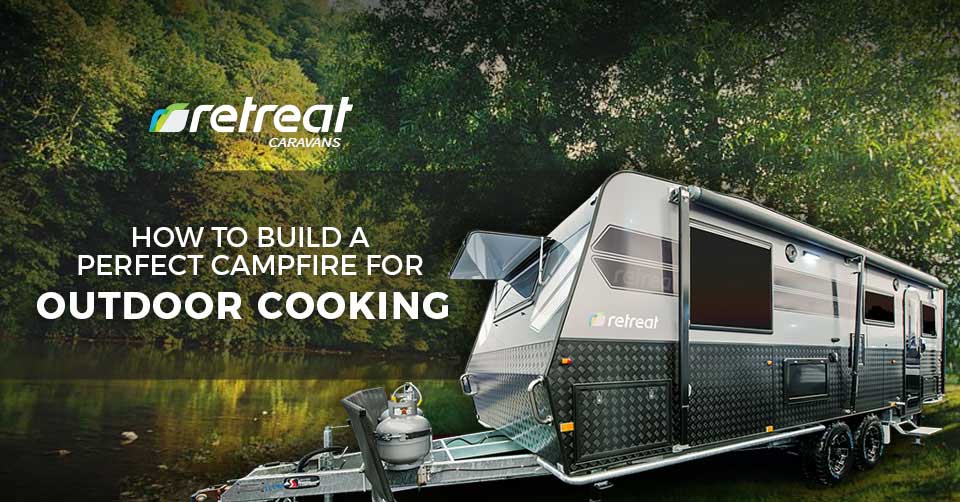
How to Build a Perfect Campfire for Outdoor Cooking
Caravan checklist on how to build a campfire for the outdoors.
Know how to make one and put out to have safe caravan cooking.
Instructions to Build a Campfire for Outdoor Cooking
Most people are envious of caravanners for their freedom and the way they prepare meals. When you’re a family on wheels, cooking is a celebration. From campfires to BBQing the fresh seafood, there are many reasons to know how to prepare a campfire before setting the wood ablaze!
Things You Need to make a Campfire outside

The golden rule in starting a campfire outside is to check the rules. Most Caravan parks have specific rules about cooking campfires and firedrums or BBQ will be your option in such cases. If you’re in a remote territory, you need to set up a safe space for your firewood as well as utensils before building the fire.
Safe Space
After rechecking if you have permissions to make a campfire in order to cook outside, choose a place away from your caravan and other flammable belongings.
Set up a fire pit after checking the direction of the wind.
Firewood
BYOF or Bring Your Own Firewood should be your guideline when you want to have campfires for outdoor cooking.
Use fuel wood so you could make:
- Tinder– Dry piece of paper or scraped bark of your firewood required to help catch fire on the bigger log. Another option are dry twigs and leaves.
- Kindling– Having an inch in diameter, kindling catches fire from the tinder and transfers it to the fuel logs.
- Fuel Wood– Dry and heavy wood that is dense is ideal to retain fire and cook smoothly for long.
Firestarter or lighter
You need a firestarter, match box, lighter or a pair of stones to make sparks like cavemen!
Fuel
Depending on the fuel that you have, kerosene, petrol or diesel is ideal to light up a fire from the hearth in dire needs.
Bushcraft Knife
Every caravanner must carry a bushcraft knife to make a campfire as well as cut wood to make tinder when needed.
Shovel
Ideal for making a fire pit so that you would not disturb the cooking pit due to the direction of the wind, Shovels are ideal to put out fires safely too.
Six Types of Campfires for Cooking Outdoors
For a caravanner, the daily menu changes with the direction of the wind and the itinerary. From a fresh catch to Wine-Delights, there are many savoury foods to cook over a flaming campfire during winter.
Given this, the more the types of campfires you know, the more options you will have to cook outdoors. This comes in handy especially when there is harsh weather.
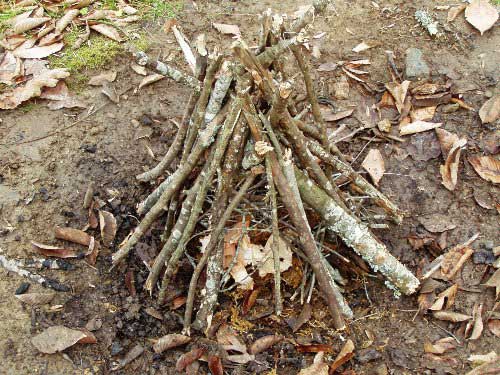
(c) Primitiveways.com
Tee Pee
Also known as Tipi campfire, Tee Pee is the most common of campfires owing to the very reason that it’s the easiest to start.
To start a TiPi fire, keep your fuel wood or kindling in a Tee Pee shape with tinder underneath or in the centre. The fire starts with the oxygen sucked from the gaps of the kindling and fuel wood.
Remember to leave enough gaps in order to light comfortably. When the Teepee structure falls, all you have to do is, add more fuel wood to it as the ember or coal will suffice for long slow cooking.
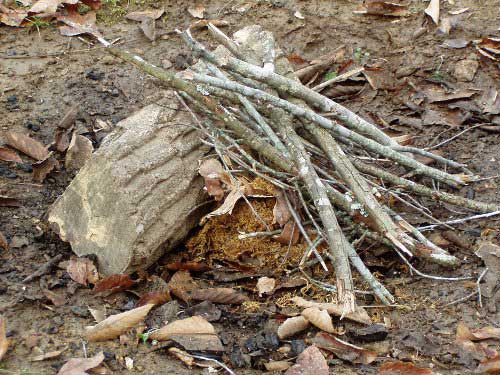
(c) Primitiveways com
Lean-To Fire
Popular as the Reflector fire, Lean-To campfire works like a steam engine by trapping the moisture from the fuel wood. Ideal during high winds and rain, the easiest way to make a fancy lean-to fire is by using one block of slanted wood as a breaker and then heap fuel onto it.
Leaning the tinder and kindling onto the bigger wood starts the fire that keeps burning the bigger wood while you cook. This type of fire is ideal for cooking Skewered meat or Roasted Marshmallows.
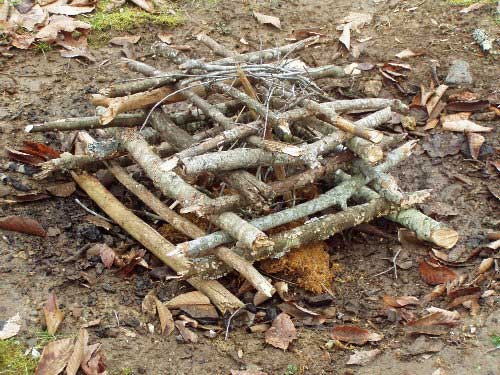
(c) Primitiveways com
Log Cabins
The best campfire with the least effort to maintain, log cabins are ideal if you want a long fire for a Dutch Oven or slow cooker recipe. You can also start the fire and let it grow until you prep other things for food with this type of campfire.
Remember to use the thickest logs for the bottom, with the thin ones on the upper part of the pile. The focus is to raise the kindling from the tinder that has flames as it lights the kindling slowly.
To build a log cabin fire, place tinder in the middle and keep fuel wood on two sides of it. Now keep two wood pieces on the next layer and keep on adding up for a proper cooking fire.
Pyramid
If you need a bed of coals for your exotic recipe, Pyramid Campfire is the best! Placing the biggest logs at the bottom, this upside down fire or platform fire uses logs placed side by side to deck up. Lighting a fire on top, this campfire produces the fastest and the most consistent burning of coals.
When the fire becomes more powerful, individual wood pieces break and fall into coal and you can use cast iron to cook directly on the coals too.
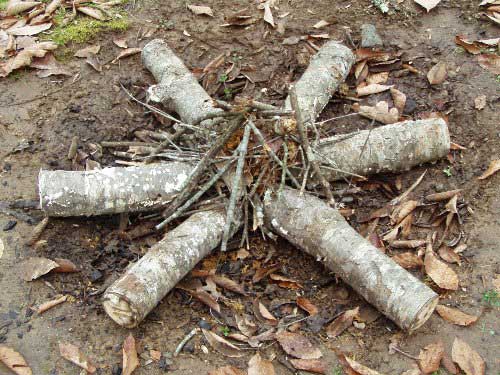
(c) Primitiveways com
Star Fire
Common as the Indian Campfire, Starfire is easy to start when you are short on fuel wood. Placing firewood in the shape of a star, you can place bricks in between each log to make a stable platform for your cooking vessel. The cowboy type of campfire can be used for lengthy cooking sessions without using too much of fuel wood.
By placing firewood at 3-4 slots, you can also improvise the Star Fire into a maintenance-free fire by building the campfire in the fire pit for the coals to slide down easily when cooking.
Parallel Fire
By keeping logs parallel to each other, you can create a parallel campfire. This is ideal for roasting food wrapped in foil using the coals. By placing two logs in a parallel pattern, you can create fire in between both to produce coals as well as long sessions of fire.
In addition, parallel fire blocks the wind from disturbing it. You can also cook multiple things on the same stretch of fire too!
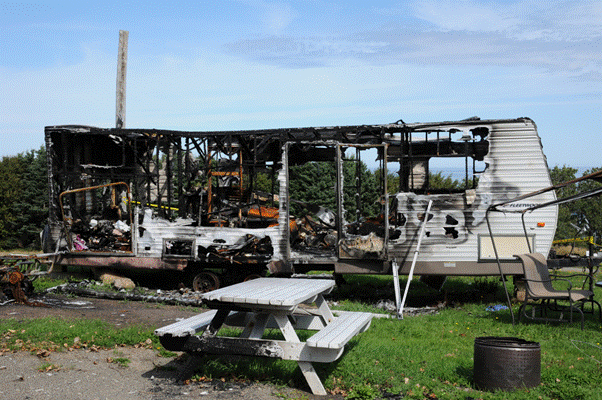
Tips How to Start a Campfire Outdoors
Campfires are serious hazards when made irresponsibly and carelessly. Without knowing the fire basics, it is hard to contain a campfire. Moreover, having fire extinguishers are necessary to make sure your outdoor cooking is 100% fun.
RELATED: How to Prevent and Contain Caravan Fires
Without a doubt, you can gauge the experience of a caravanner by the type of campfire he or she builds. By the fire built, you can judge his or her adaptability to the wild too!
-
How to Start a Campfire?
If you don’t know the laws regarding campfires in your destination, it is best that you avoid making fires. From animal hazards to wild fires, there are countless threats to a poorly made campfire. Hence, if you are not sure whether you can make a campfire, do not make one!
-
Buying Quality Fuel Wood Vs Cheap Fuel Wood
Yet another common amateur mistake with campfires is saving up on fuel wood. It will be heart breaking if your campfire dreams fail to light up because of cheap wood.
Try your best to find a trustworthy source of quality firewood than buying cheap wood to avoid accidental burns and uncontrolled fire.
-
Smell the smoke First
Different wood smells differently. You must smell the smoke first prior to using it for an exquisite dish with the sensitive smell.
Moreover, rotten wood smells funky and can kill your culinary vibe as well as appetite.
-
Fencing your Fire
A brilliant way of building responsible and safe campfires is by containing your fire appropriately. One age-old way of doing so is by placing a circle of rocks around your campfire to prevent coal or ember from spreading around and burning the wild grass.
-
Rocks for your Campfire
When picking rocks to contain your campfire, avoid ones that can explode such as the rocks with glass. Exploding rocks contain moisture, thus, when they experience high heat, they blast. Such stones are found in varieties of Limestone, Sandstone or other local varieties.
-
Embers are better than real fire
When making a campfire for cooking, it is best to go for a coal-lit fireplace than a blazing fire.
Embers are coals last longer and require lesser maintenance than an uncontrolled roaring fire. Simply put, embers are way better for cooking than flames.
-
Dry Vs Damp Wood
One golden rule is avoiding burning damp wood. Experimenting with damp wood will only invite chaos. Always use dry wood. Dry the wood separately before adding it your fire as the same can kill a fire too.
Conclusion
As important as learning how to build a campfire is the golden lesson of How to Put out a campfire. In addition to having an extra can of water and sand to put out a fire immediately, you can follow the below steps in the occurrence of an emergency-
- Don’t Leave the Fire to Die on its Own and Never Leave a Fire Unattended
- Sprinkle water instead of pouring in one stretch over a roaring fire out of control
- Stir the Embers when trying to Shut the Fire than pouring water all at once
- Clean out the Ashes when you’re done with your fire
- Patch the ground with the Dirt you’d shovelled out earlier
Lastly, leave the site just as you found it!
Things You Might Like to Read:
Ways to Keep Pests Away from your Rig
Ways to Save Money while Caravanning
Awesome Apps for Techie Caravanners
First Time Caravanners Preparation Checklist
Top Causes of Caravan Accidents



